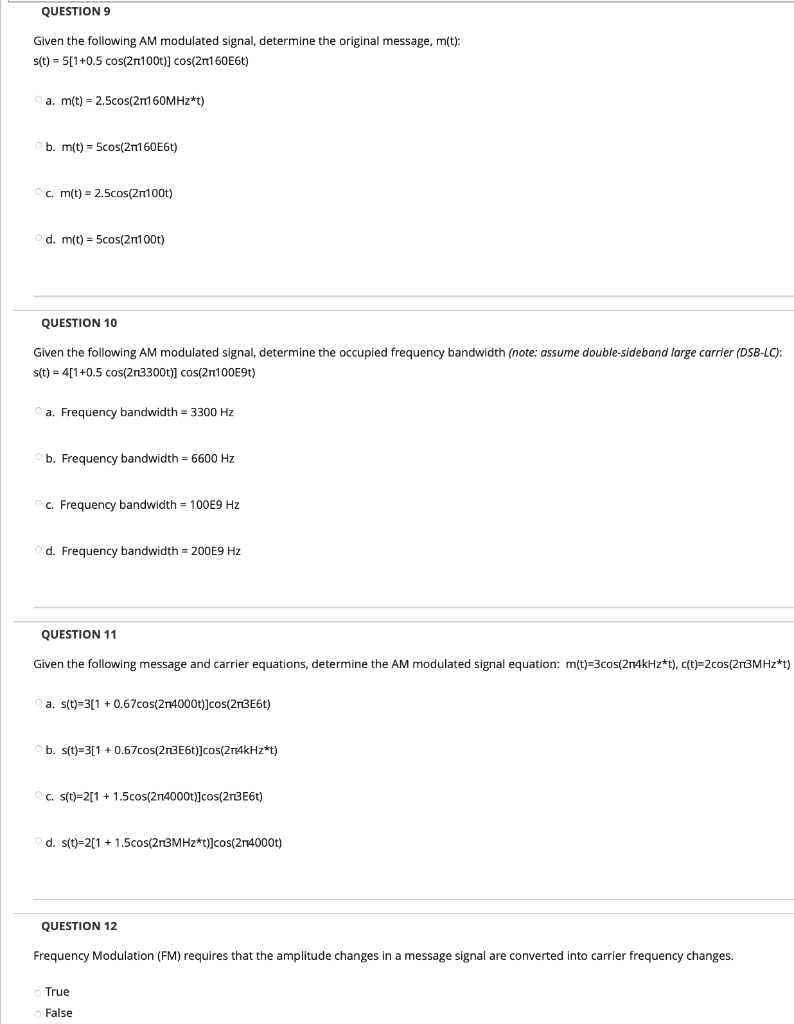Answered step by step
Verified Expert Solution
Question
1 Approved Answer
Study review questions QUESTION 9 Given the following AM modulated signal, determine the original message, m(t) s(t) 51+0.5 cos(2n100t)] cos(2n1 60E6t) a. m(t) -2.5cos(2160MHz*t) C.
Study review questions
Step by Step Solution
There are 3 Steps involved in it
Step: 1

Get Instant Access to Expert-Tailored Solutions
See step-by-step solutions with expert insights and AI powered tools for academic success
Step: 2

Step: 3

Ace Your Homework with AI
Get the answers you need in no time with our AI-driven, step-by-step assistance
Get Started


